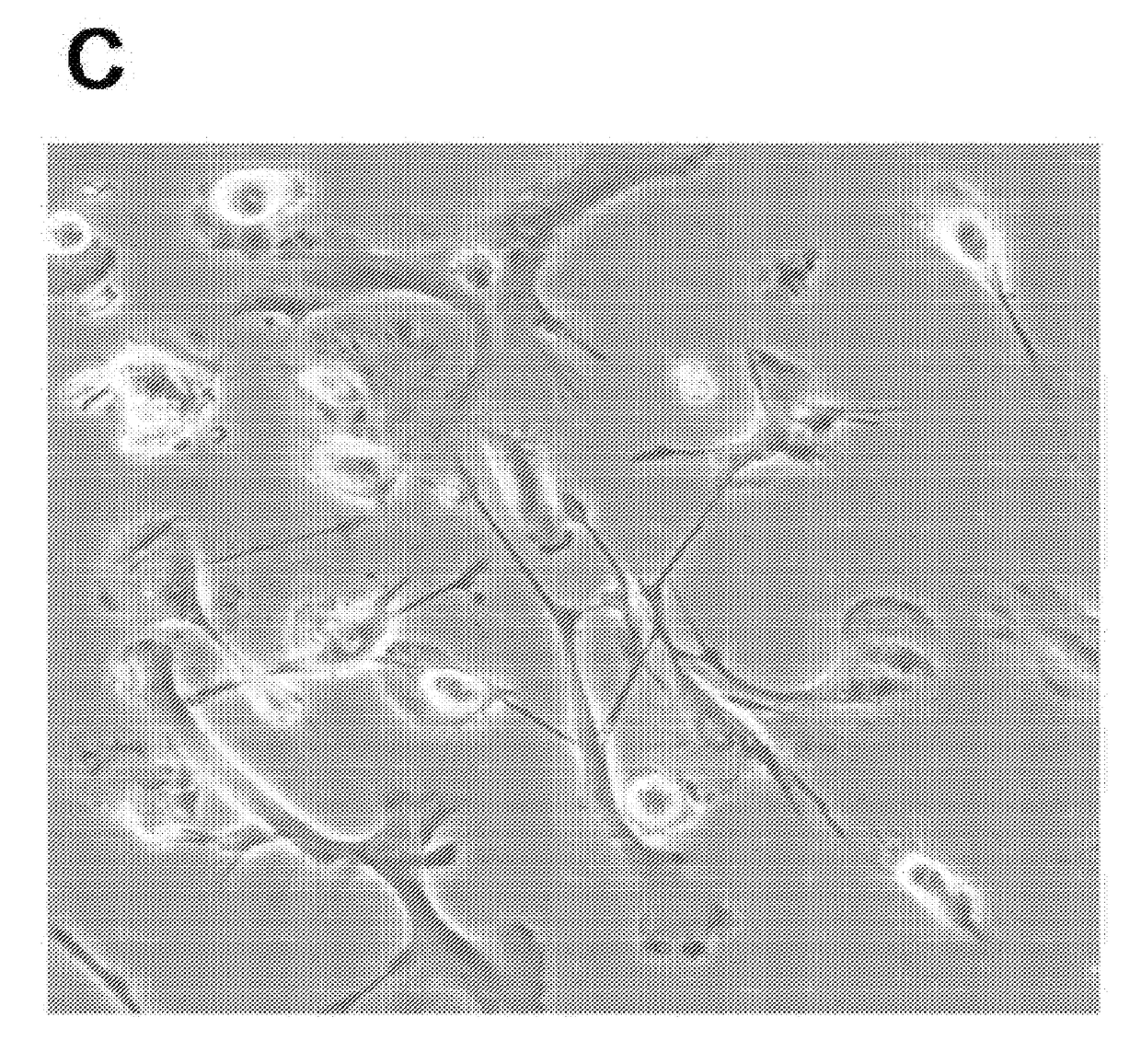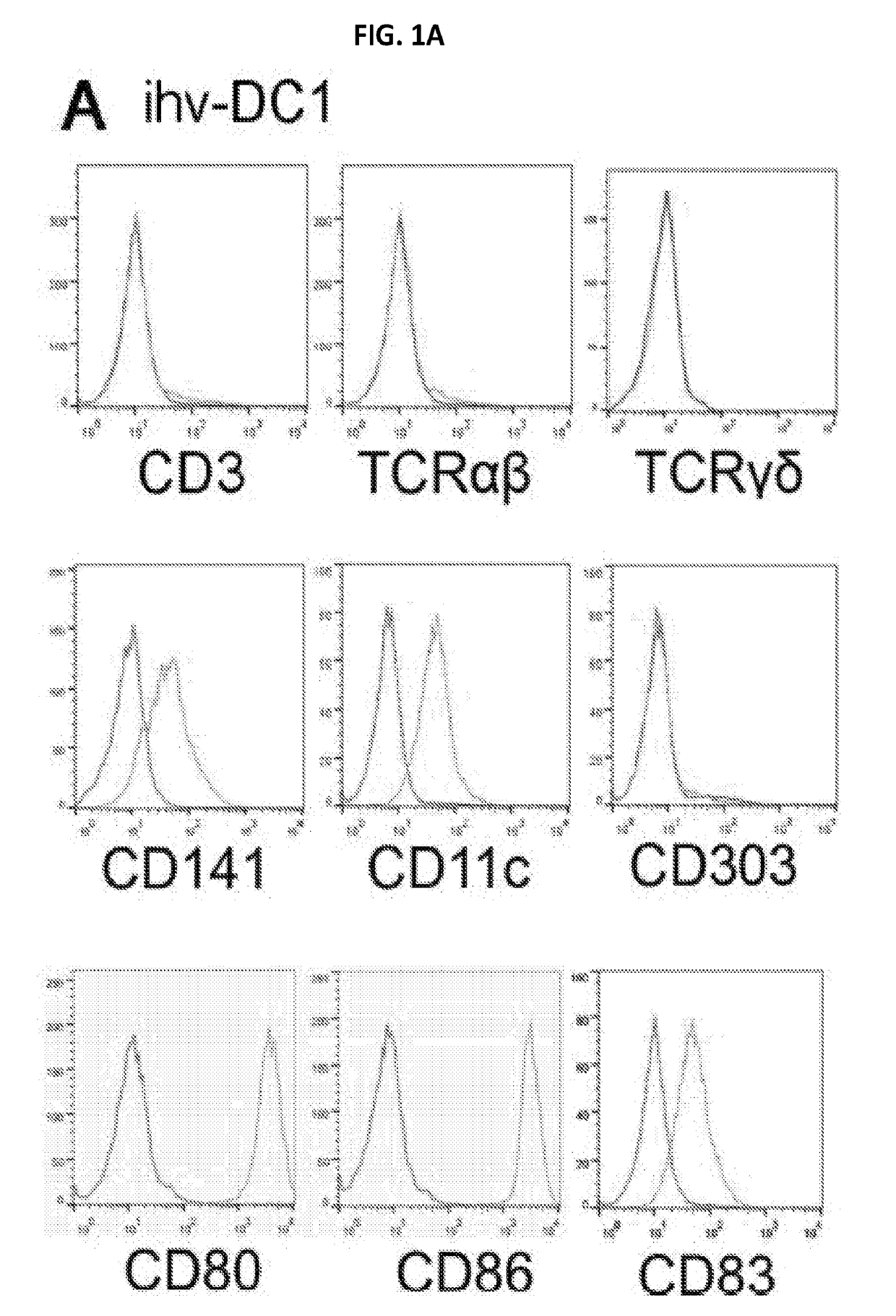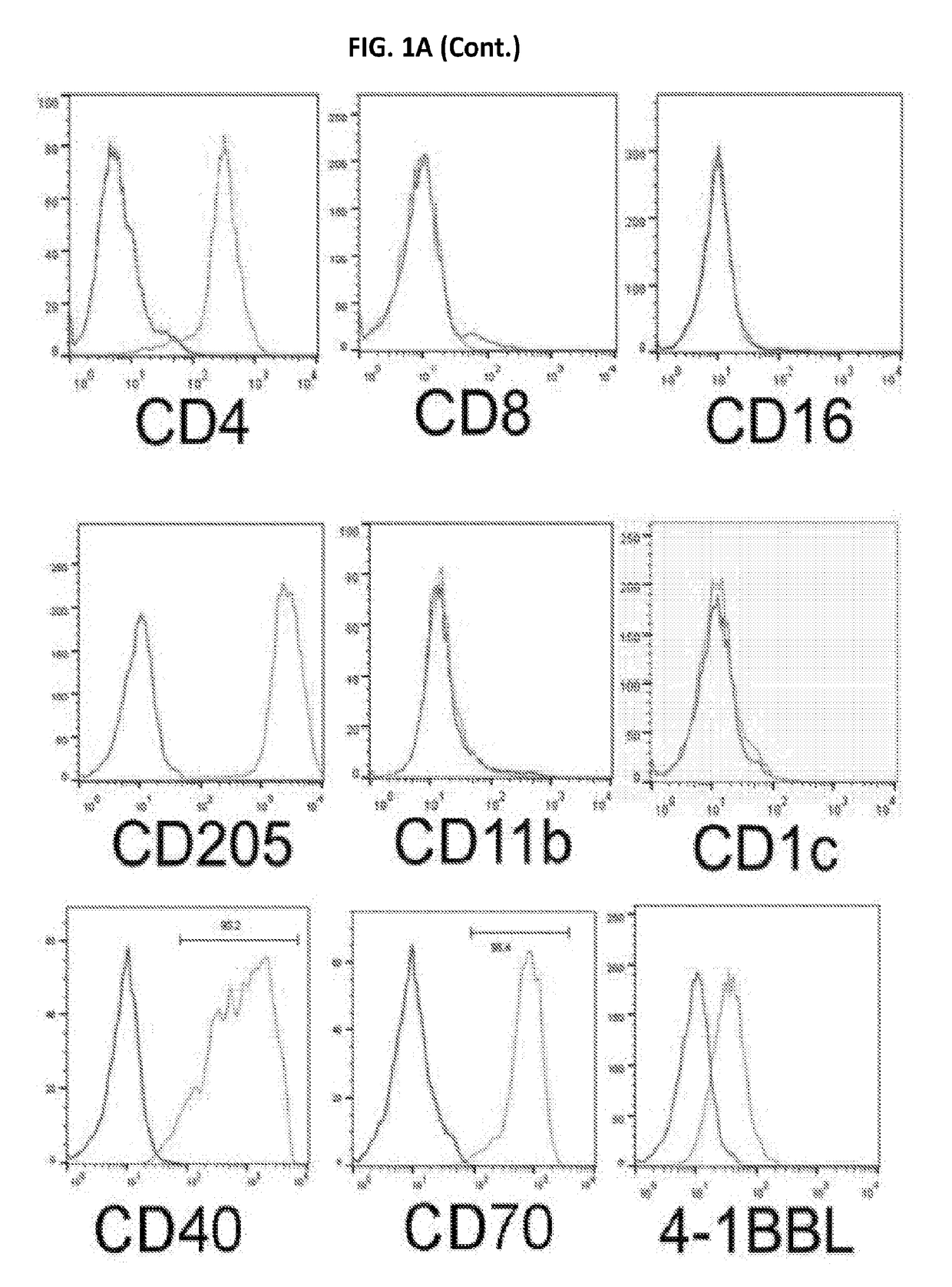Methods for generating engineered human primary blood dendritic cell lines
a technology of dendritic cells and engineered human, applied in the field of biology and medicine, can solve the problems of poor growth potential, difficult to maintain, and limited clinical benefits of such an approach
- Summary
- Abstract
- Description
- Claims
- Application Information
AI Technical Summary
Benefits of technology
Problems solved by technology
Method used
Image
Examples
example 1
nt of Human Primary Blood and Monocyte-Derived Dendritic Cell Lines
[0467]HTLV-2 Tax was exploited as a molecular tool for its role in modulating DC function. To prevent potential loss of DCs during culture of the Tax-transduced PBMCs, the transduced cells were negatively selected using anti-CD3 magnetic beads to deplete T cells. Two CD3-negative Tax-GFP+ cell lines from the transduced PBMCs of ten blood donors were evolved and grew continuously over six months without losing growth potential. These two DC cell lines, which were established from two different blood donors, displayed dendritic cell-related markers. These cells were lineage-negative and expressed CD11c and CD205 as well as DC maturation and activation molecules including CD83, CD80, CD86, CD70, CCR7 and HLA-DR (FIGS. 1a and 1b). These two cell lines were named as ihv-DC1 and ihv-DC2, which represented a subset of human CD11c+ / CD205+ blood dendritic cells that maintained a constitutive maturation and activation phenotyp...
PUM
| Property | Measurement | Unit |
|---|---|---|
| Cytotoxicity | aaaaa | aaaaa |
| Antigenicity | aaaaa | aaaaa |
Abstract
Description
Claims
Application Information
 Login to View More
Login to View More - R&D
- Intellectual Property
- Life Sciences
- Materials
- Tech Scout
- Unparalleled Data Quality
- Higher Quality Content
- 60% Fewer Hallucinations
Browse by: Latest US Patents, China's latest patents, Technical Efficacy Thesaurus, Application Domain, Technology Topic, Popular Technical Reports.
© 2025 PatSnap. All rights reserved.Legal|Privacy policy|Modern Slavery Act Transparency Statement|Sitemap|About US| Contact US: help@patsnap.com



